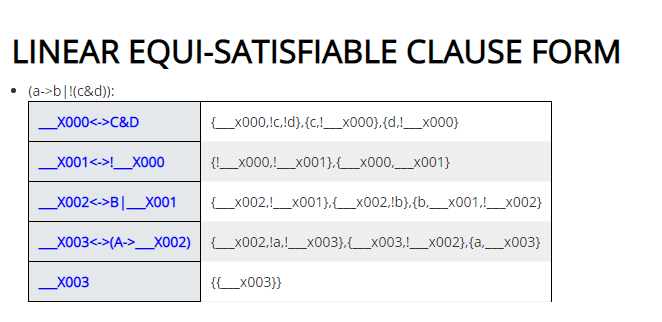linear-size clause form:
a → (b ∨ ¬(c ∧ d))
Solution:
x0 <-> (c∧d) : {x0,¬c,¬d}{¬x0,c}{¬x0,d}
x1 <-> ¬x0 : {x1,x0}{¬x0,¬x1}
x2 <-> (b∨x1) : {b,x1,¬x2}{x2,¬b}{x2,¬x1}
*** x3 <-> (a→x2) : {x3,¬a}{x3,x2}{a,¬x2,¬x3}
x3: {x3}
for part (***) I have transformed to clause by below:
x3 <-> (a→x2)
=> (x3 → (a→x2)) ∧ ((a→x2) → x3)
=> (x3 → (a∨¬x2)) ∧ ((a∨¬x2) → x3)
=> (x3 ∨ ¬(a∨¬x2)) ∧ ((a∨¬x2) ∨¬x3)
=> (x3 ∨ (¬a∧x2)) ∧ ((a∨¬x2) ∨¬x3)
=> (x3 ∨ ¬a)∧(x3 ∨ x2)∧(a∨¬x2∨¬x3)
BUT, when I compare it with teaching tool result they are different.
 Please may clarify which part I have done wrongly?
Please may clarify which part I have done wrongly?
Thank you.